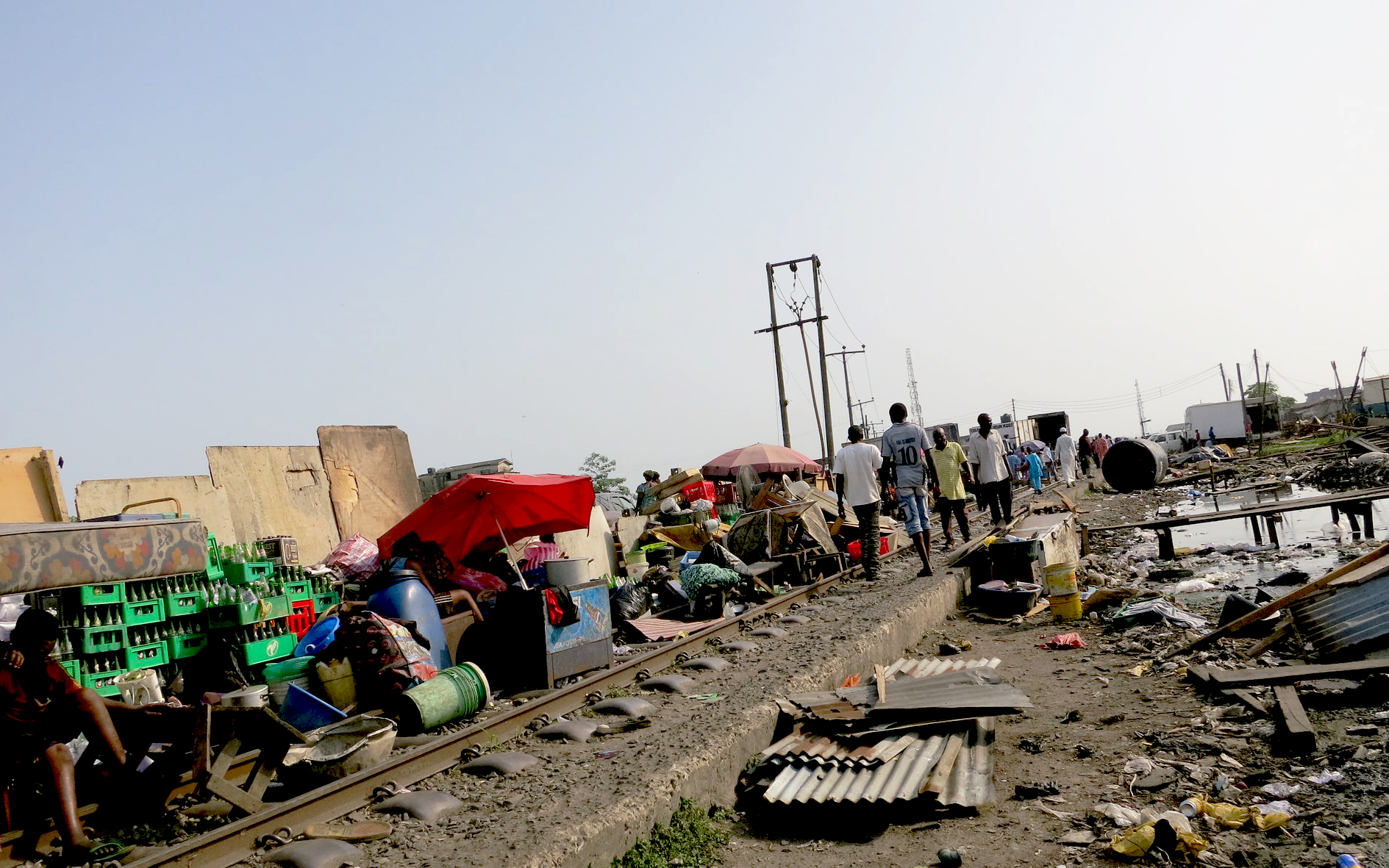 With the UN climate change conference in Paris getting underway this week, the International Development department are keeping a close eye on the talks. Climate change is a big issue in Development so over the next couple of weeks members of the department will be giving us their views. We start by hearing from Claudia Melim-McLeod, an International Development Visiting Senior Fellow, on the the contributions of the BRICS countries (Brazil, Russia, India, China and South Africa).
With the UN climate change conference in Paris getting underway this week, the International Development department are keeping a close eye on the talks. Climate change is a big issue in Development so over the next couple of weeks members of the department will be giving us their views. We start by hearing from Claudia Melim-McLeod, an International Development Visiting Senior Fellow, on the the contributions of the BRICS countries (Brazil, Russia, India, China and South Africa).
Recent research indicates that the current Paris Climate Change Summit will not deliver national commitments to keep global warming under the 2⁰C limit considered safe by 2100. In the article below, I briefly discuss the contributions of Brazil, Russia, India, China and South Africa – the BRICS countries – to a new international climate change agreement to be signed at the Summit, and how their positions, if unchanged, may contribute to an average warming of 2.7⁰C by the end of the century.
Paris: A Climate Game Changer?

With the increasing frequency and devastation caused by extreme weather events such as droughts and floods over the past decades, stakes are high at the 21st Conference of the Parties to the United Nations Framework Convention on Climate Change – also known as the Paris Summit, or the Paris COP.
As has been widely publicized by the media, the Intergovernmental Panel on Climate Change (IPCC) has warned of impacts on ecosystems and water resources even with a temperature increase of 1-2°C above pre-industrial levels. And once global warming exceeds 2°C, climate impacts on food production, water supply and ecosystems are projected to increase significantly and irreversible, catastrophic events may occur.
That should be more than enough reason to push governments into action, if it were not for a lingering argument between developing and developed countries, which boils down to two main questions. The first is about the historical responsibility of developed countries for emissions that have resulted in global warming, and whether emerging economies should not have the same right to cheap energy for their development. The second is to what degree developed countries should shoulder the cost for mitigation efforts that can potentially constrain the pace and scale of development in developing countries. The BRICS countries, in particular, have until recently fiercely resisted the idea of sacrificing their fossil-fuel powered economic growth to mitigate climate change.
The BRICS’ game plan
It has become slightly démodé to refer to the BRICS as a group, and their climate change policies are far from well-aligned. But together, Brazil, Russia, India, China and South Africa represent 39 per cent of the world’s greenhouse gas (GHG) emissions based on their consumption of energy. They also make up 42 per cent of the world’s population and 27 per cent of the world’s Gross Domestic Product (GDP). The latter is the crux of the matter: regardless of how democratic their different countries are, none of the BRICS leaders are keen to significantly sacrifice growth in order to curb emissions, and there is a very deeply entrenched perception among them that tackling climate change means a decline in their GDP.
At the recent G-20 meeting in Turkey, the BRICS met on the margins to discuss a range of issues of common interest, including the much touted New Development Bank. According to the Media Note released by the group, “[t]he Leaders look forward to a successful outcome at COP 21 in Paris in December, and affirm their determination to adopt, at the Paris Conference, a protocol, another legal instrument or an agreed outcome with legal force under the UNFCCC that is applicable to all Parties.”
As the old adage goes, if something sounds too good to be true, it usually is. A legally binding document has been the dream of climate activists since the Rio Conference in 1992, so at face value that sounds like an incredible commitment. The trick here is that whatever “instrument” would eventually be legally binding is based on the so-called “Intended Nationally Determined Contributions” (INDCs) that countries had to submit to the UNFCCC Secretariat by the end of October. As each country can freely determine what it intends to contribute to the deal, defending the legally binding nature of the agreement is a bit like defending the rule of law as long as you get to decide what parts of the law apply to you.

In addition, the INDCs are provided in different formats and use different metrics, so comparing contributions in terms of ambition is not easy. These are the BRICS targets as per their INDCs, verbatim:
Brazil: “Brazil intends to commit to reduce greenhouse gas emissions by 37% below 2005 levels in 2025. Subsequent indicative contribution: reduce greenhouse gas emissions by 43% below 2005 levels in 2030. Type: absolute target in relation to a base year.”
Russia: “Limiting anthropogenic greenhouse gases in Russia to 70-75% of 1990 levels by the year 2030 might be a long-term indicator, subject to the maximum possible account of absorbing capacity of forests.”
India: “India declared a voluntary goal of reducing the emissions intensity of its GDP by 20–25%, over 2005 levels, by 2020, despite having no binding mitigation obligations as per the Convention.”
China: “The pledge commits China to a peak in emissions by 2030, an increase in the share of non-fossil fuels in its energy mix by about 20 percent by 2030, and a reduction in carbon dioxide emissions per unit of GDP by 60-65% by 2030, from 2005 levels.”
South Africa: “South Africa’s emissions by 2025 and 2030 will be in a range between 398 and 614 Mt CO2–eq, as defined in national policy” (The equivalent to a 82% increase in the 1990 emission level excluding land use, land use change and forestry).
But is this enough? The BASIC Group, consisting of the BRICS minus Russia, met in Beijing two weeks before the G-20 meeting, and in a Joint Statement, “emphasized the importance of holding the increase in average global temperature below 2°C related to pre-industrial levels, through enhanced mitigation, adaptation and means of implementation for both.” However, according to the Climate Action Tracker (CAT), an independent assessment carried out by a consortium of four research organizations, Brazil, India and China’s contributions are classified as “medium”, which means that the INDCs are “not consistent with limiting warming to below 2°C, as it would require many other countries to make a comparably greater effort and much deeper reductions.” Russia and South Africa’s INDCs rate is even lower and categorized as “inadequate”, meaning that “if all governments put forward inadequate positions, warming is likely to exceed 3–4°C.” The Tracker places only one of the countries assessed – tiny Bhutan – in the “role model” category, and three others – Costa Rica, Ethiopia, and Morocco, as making a “sufficient” contribution, “fully consistent with the 2⁰C limit.”
The wishful thinking was that somehow, the collection of INDCs put forward by the 196 countries that are party to the UNFCCC would, together, avert the scenario of going beyond the 2⁰ C. We now know that this is not going to happen based on the INDCs alone. The contribution of the BRICS, although more ambitious than in the past, will not be sufficient – and other countries’ INDCs are not going to make up for their shortfalls, as the BRICS had perhaps gambled. The CAT estimates that based on the INDCs submitted, the temperature will rise 2.7 by 2100.
That does not mean that it will be impossible to catch up later, but it will be more expensive and more difficult. In its Synthesis report on the aggregate effect of the intended nationally determined contributions, the UNFCCC states that “if Parties were to not enhance mitigation action until 2030, beyond the action envisaged in the INDCs, the possibility of keeping the temperature increase below 2 °C still remains. However, (…) this could be achieved only at substantially higher annual emission reduction rates and cost compared with the least-cost scenarios that start today or in 2020. Therefore, a much greater emission reductions effort ,than those associated with the INDCs, will be required in the period after 2025 and 2030 to hold the temperature rise below 2°C above pre-industrial levels.”

The second best option
The bottom line: We may still achieve a limit of 2 degrees if we wait but it will cost more, and possibly exponentially more. According to the influential Stern Review, failing to curb emissions would cost 5 per cent of the global GDP per year, and eventually 20 per cent of GDP due to all the economic losses associated with extreme weather events. To illustrate: think of the ongoing 4-year California drought, which is estimated to cost USD 3 billion and 21,000 jobs this year alone. In South Asia, flooding could cost USD 215 billion a year in lost GDP by 2030. Tackling climate change, however, would cost 1% of GDP, argued the Review (Stern later said 2 per cent was more realistic given the rapidly rising rate of emissions) [1]. This shows the shortsightedness of the current round of BRICS policies, and those of other big emitters. Many countries remain in the mode of “grow first, clean up later”, despite rhetoric to the contrary.
Still, it may be too early to cry wolf. INDCs are, as the name indicates, intended contributions, and not written in stone. Brazil will not leave oil in the ground, but promises “zero illegal deforestation” by 2030, heavy investments in renewables, as well as in climate-smart agriculture. Russia will not give up gas and India, China and South Africa, too, are still going to burn up coal, while seeking to expand the share of renewables in energy consumption and pledging significant improvements in energy efficiency as well as in transport and land use, land use change and forestry, also known as LULUCF.
An optimistic scenario would see a fall in overall BRICS emissions based on the adoption of carbon pricing policies, the removal of fossil fuel subsidies and a concomitant increase in renewables making them cheaper as well as affordable. As Bloomberg recently reported, wind power is now the cheapest electricity in Germany and the UK. If renewables become inexpensive, market forces combined with sensible policies in emerging and consolidated economies could take the BRICS on a more climate compatible development path.
Be as it may, this is no zero sum game: either we all win or we all lose, together.
[1] Berners-Lee, Mike and Duncan, Clark (2013). The Burning Question, p. 113, Profile Books, London, UK.
The article was originally written for a non-specialized audience who may have an interest in climate change and/or the BRICS, and was published in the MMC Blog as our November post.





